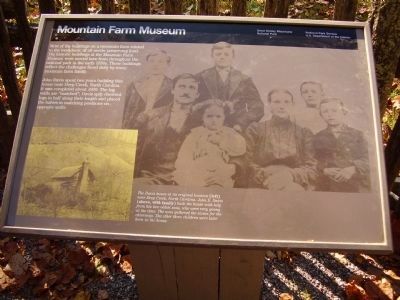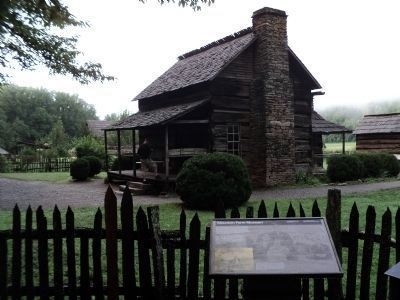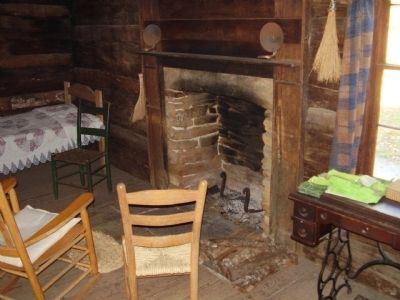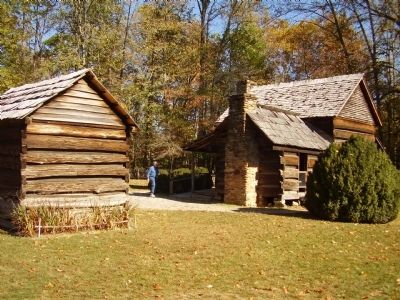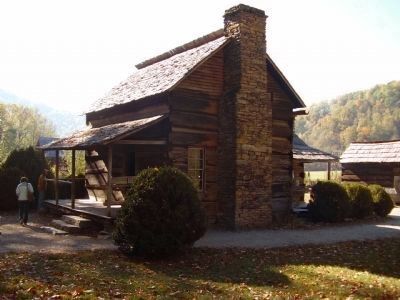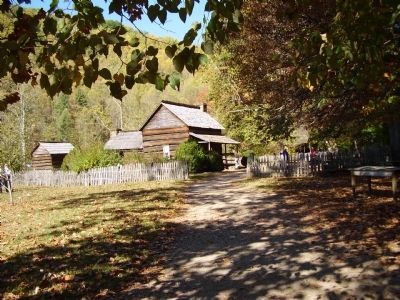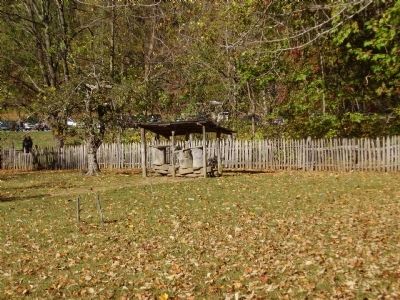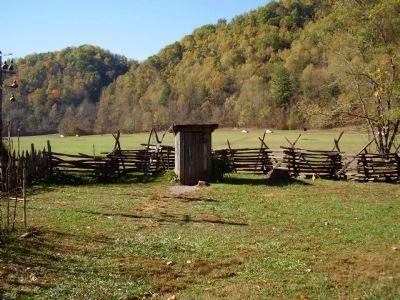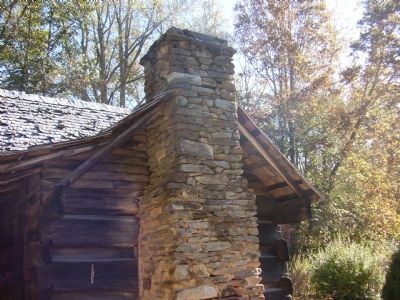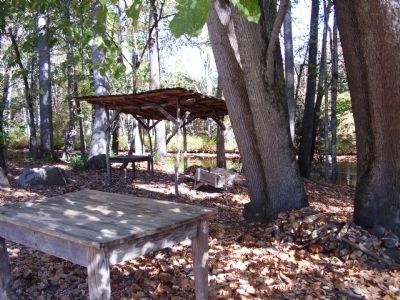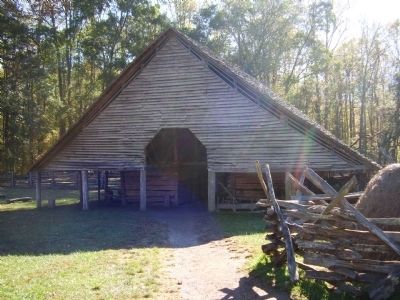Great Smoky Mountains National Park in Swain County, North Carolina — The American South (South Atlantic)
Mountain Farm Museum
John Davis spent two years building this house near Deep Creek, North Carolina. It was completed about 1900. The log walls are "matched"; Davis split chestnut logs in half along their length and placed the halves in matching positions on opposite walls.
Erected by Great Smokey Mountains National Park , National Park Service U.S. Dept. of the Interior.
Topics. This historical marker is listed in this topic list: Landmarks. A significant historical year for this entry is 1900.
Location. 35° 30.79′ N, 83° 18.285′ W. Marker is in Great Smoky Mountains National Park, North Carolina, in Swain County. Marker is on U.S. 441, half a mile north of Blue Ridge Parkway. Touch for map. Marker is in this post office area: Cherokee NC 28719, United States of America. Touch for directions.
Other nearby markers. At least 8 other markers are within walking distance of this marker. The Meathouse (within shouting distance of this marker); Apple House (within shouting distance of this marker); Springhouse (within shouting distance of this marker); Corn Cribs (within shouting distance of this marker); Blacksmith Shop (about 300 feet away, measured in a direct line); Sorghum Mill and Furnace (about 400 feet away); Broomcorn (about 400 feet away); Sorghum Cane (about 400 feet away). Touch for a list and map of all markers in Great Smoky Mountains National Park.
More about this marker. Left Photo
The Davis house at its original location (left)near Deep Creek, North Carolina. John E.Davis (above, with family) built the house with help from his two oldest sons, who were very young at the time. The sons gathered the stones for the chimneys. The other three children were born in the house.
Also see . . . Mountain Farm Museum and Mingus Farm - National Park Service. (Submitted on October 20, 2008, by Bill Pfingsten of Bel Air, Maryland.)
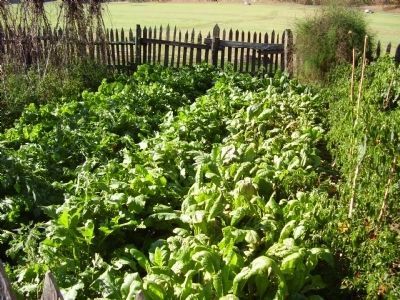
Photographed By Stanley and Terrie Howard, October 19, 2008
10. Mountain Farm
Gardens produced fresh food as to preserve and
varied in size depending on the needs of a family. Before home canning came into widespread use, pickling and drying were the primary methods of preserving food. Some garden produce, like potatoes, turnips, and cabbage, stored well for the winter if protected from freezing.
Plants like lettuce, turnips, mustard, and cabbage, that could tolerate cool weather, made it possible to grow some fresh "greens" throughout much of the year. Wild greens, berries, nuts and a variety of other forest plants also provided food for families.
Plants like lettuce, turnips, mustard, and cabbage, that could tolerate cool weather, made it possible to grow some fresh "greens" throughout much of the year. Wild greens, berries, nuts and a variety of other forest plants also provided food for families.
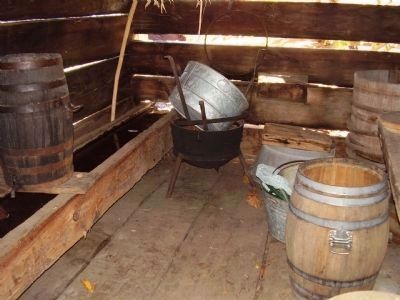
Photographed By Stanley and Terrie Howard, October 19, 2008
11. Springhouse
A reliable source of drinking water was important in selecting a house site. A good spring met that need and also provided a means for keeping perishable foods.
Water from a spring flowed through the spring house in a rock-lined channel in the floor or in an elevated wooden trough like the one in this structure. Containers of perishable food, especially dairy products, were placed in the trough and were "refrigerated" by the cool water flowing around them.
Crocks, barrels, and jars containing a variety of less perishable foods were sometimes stored in the spring house as well, particularly during warm weather. The building also protected the food stored there from animals.
Water from a spring flowed through the spring house in a rock-lined channel in the floor or in an elevated wooden trough like the one in this structure. Containers of perishable food, especially dairy products, were placed in the trough and were "refrigerated" by the cool water flowing around them.
Crocks, barrels, and jars containing a variety of less perishable foods were sometimes stored in the spring house as well, particularly during warm weather. The building also protected the food stored there from animals.
Credits. This page was last revised on October 22, 2016. It was originally submitted on October 20, 2008, by Stanley and Terrie Howard of Greer, South Carolina. This page has been viewed 1,106 times since then and 32 times this year. Photos: 1. submitted on October 20, 2008, by Stanley and Terrie Howard of Greer, South Carolina. 2. submitted on August 29, 2012, by Bill Coughlin of Woodland Park, New Jersey. 3, 4, 5, 6, 7, 8, 9, 10, 11, 12. submitted on October 20, 2008, by Stanley and Terrie Howard of Greer, South Carolina. 13. submitted on October 22, 2008, by Stanley and Terrie Howard of Greer, South Carolina. • Bill Pfingsten was the editor who published this page.
